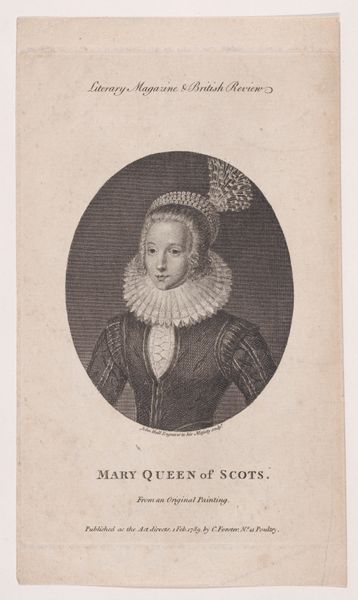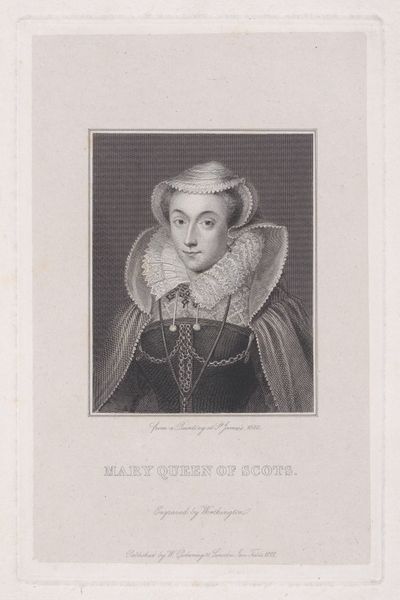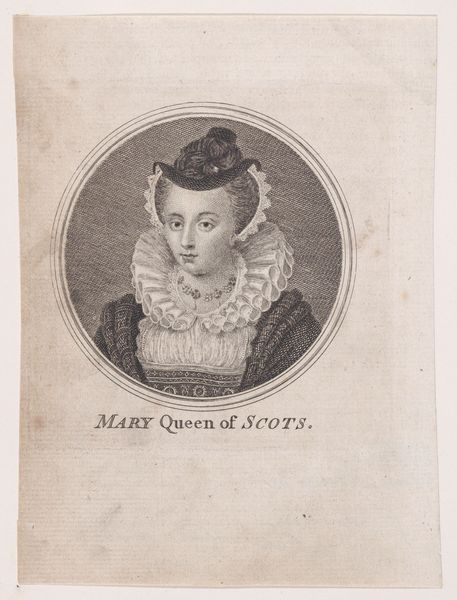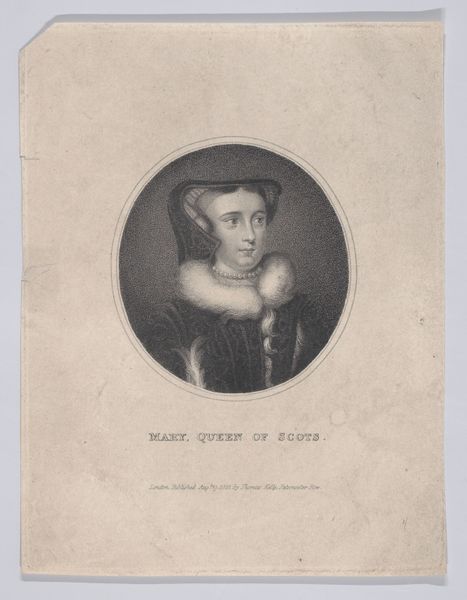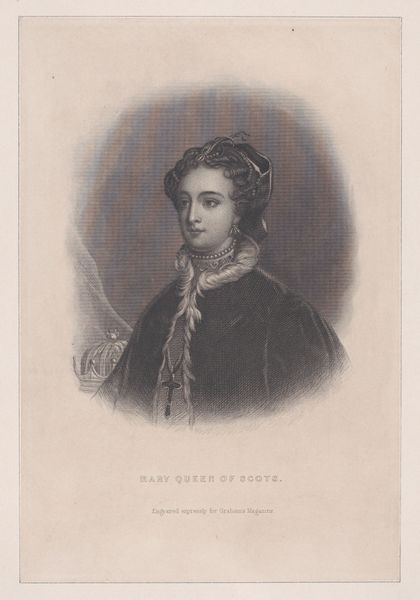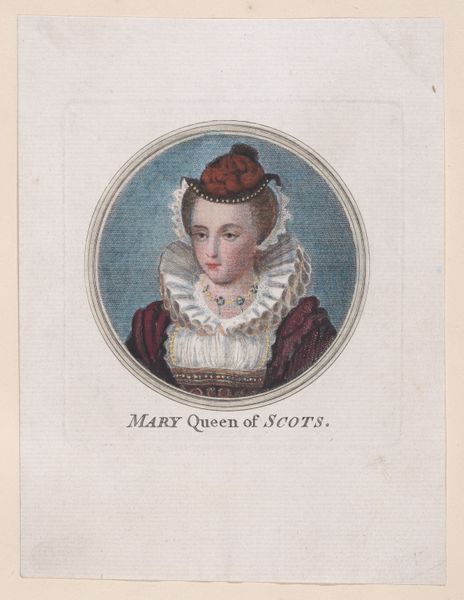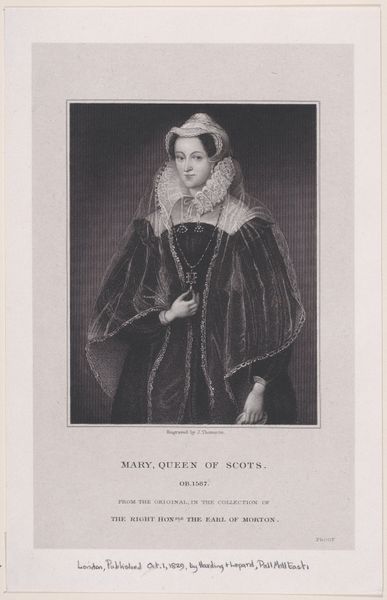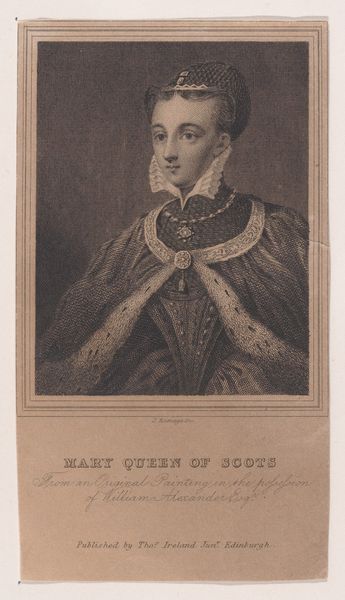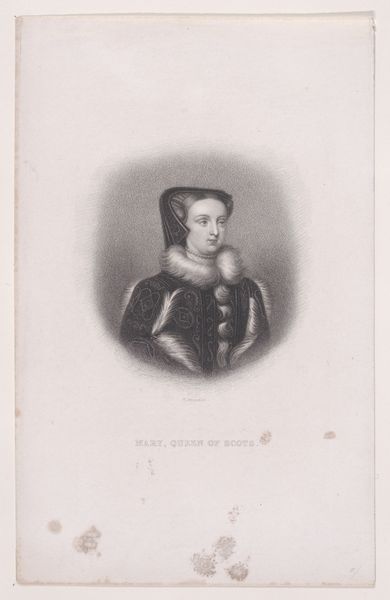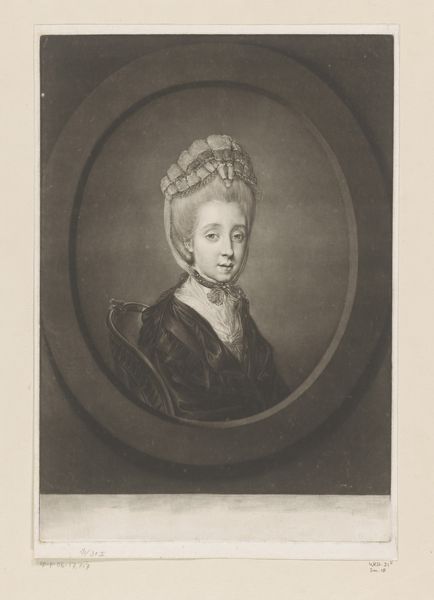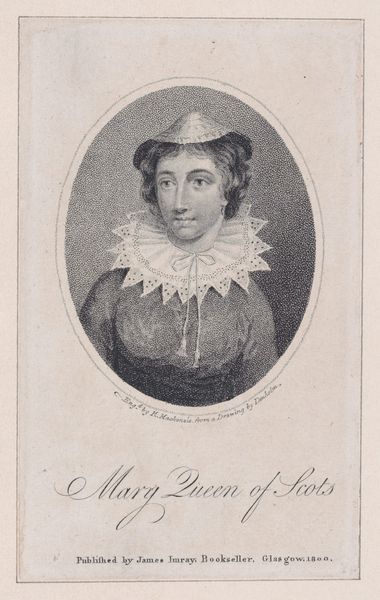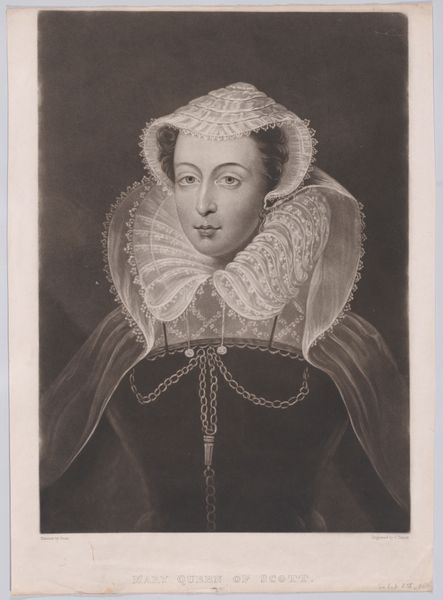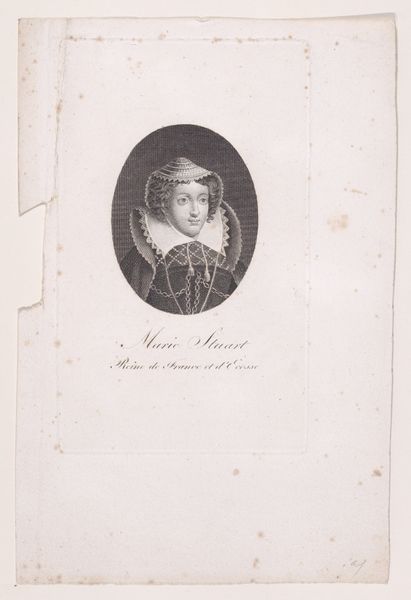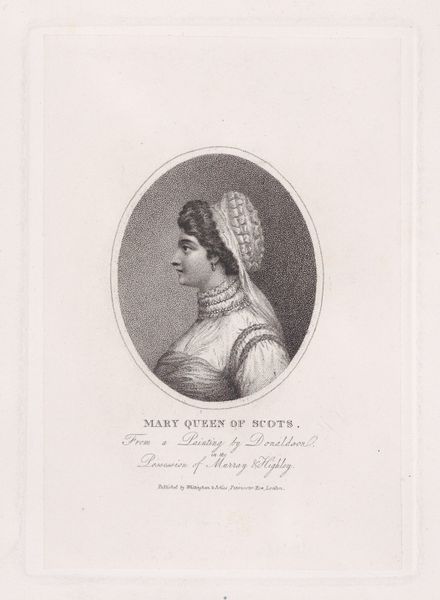
drawing, print, engraving
#
portrait
#
drawing
#
neoclassicism
# print
#
history-painting
#
engraving
Dimensions: Sheet: 6 3/4 × 5 1/16 in. (17.1 × 12.8 cm)
Copyright: Public Domain
Curator: Here we have "Mary, Queen of Scots," an engraving by John Chapman, created around 1795. Editor: My first impression is that the engraving is remarkably poised, almost stoic. The monochromatic palette creates a somber mood, yet there’s a delicacy to the linework in the rendering of her face and clothing. Curator: Absolutely. Consider the context in which this work was produced: the late 18th century witnessed a renewed fascination with Mary Stuart, largely fueled by Romanticism's interest in tragic heroines and challenges to established power. Chapman's work taps into the debates concerning Mary's role as a woman in power, a Catholic monarch in a Protestant land, and a figure caught in webs of political intrigue, which eventually led to her execution. Editor: I see your point, yet the composition itself is also carefully constructed. The oval frame focuses our gaze on her face, drawing our attention to its classical features: the symmetry, the clear lines, all evoking Neoclassical ideals. The fur collar frames the neck and leads the eye upwards in a rather clever structural technique. Curator: And let's not forget how prints such as these functioned in society. They were relatively affordable and thus widely disseminated. The image became a powerful tool in shaping public opinion. Editor: Right. Notice the exquisite rendering of textures. Chapman really creates contrasts by setting dense, intricately patterned areas, such as in the dress, against areas of smoother gradation. This makes us keenly aware of light and shadow, thereby adding considerable volume to the figure despite it being a flat printed medium. Curator: Which highlights the complexity of representations of women in positions of power, doesn't it? She embodies the archetype of the tragic queen, caught in a historical moment that sealed her destiny. The image, and the medium itself, can therefore be examined in its function for communicating certain social ideals, class values, or assumptions around gender. Editor: That's well-considered. It enriches our understanding by taking a broader approach to the analysis, not only of Mary Stuart’s identity but also to examine the context in which we view it today. Curator: I concur. Together, these details paint a nuanced picture of an artwork deeply embedded in complex historical narratives.
Comments
No comments
Be the first to comment and join the conversation on the ultimate creative platform.
